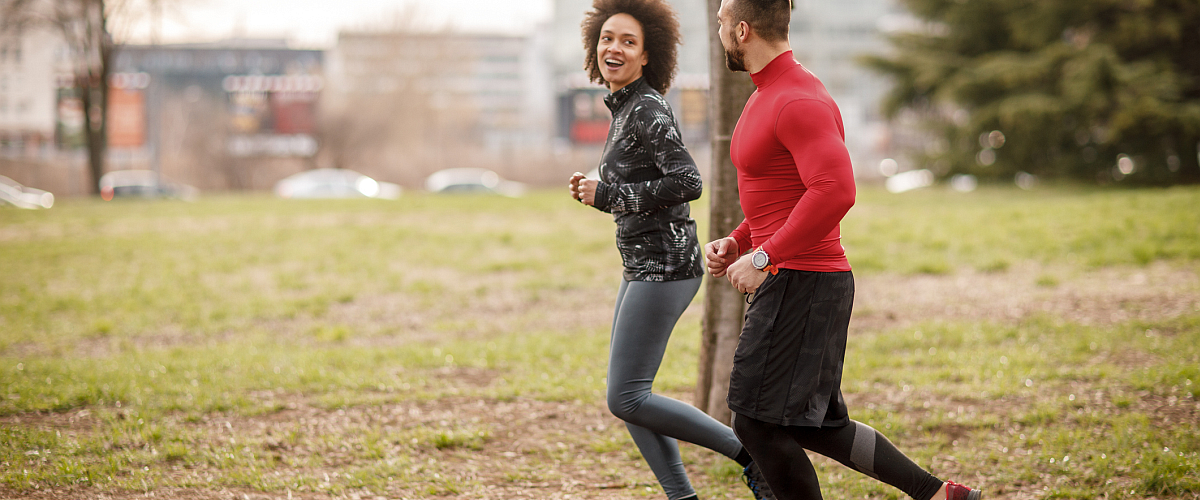If you’ve been following this blog for a while, you know we’ve written about the benefits of going plant-forward, as well as how to fuel your fitness routine. We thought we’d take a fresh look at how these topics overlap.
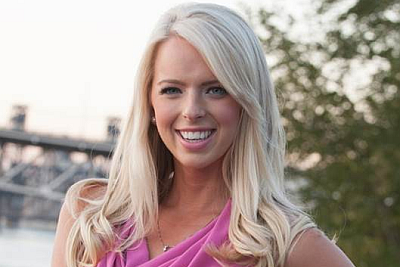
It’s a question our dietitians are often asked: How do vegan and vegetarian diets work for people who engage in intense exercise?
For answers, we sat down with Registered Dietitian Nutritionist Amy Anderson, Nutrition Program Manager for Aramark Business Dining.
Our conversation with Amy explored how following a plant-only or plant-forward eating pattern can work for those training for an athletic event, such as a 5K or marathon—or for those who just like to hit the gym, trail or road.
Q: First, can you remind us what it means to be vegan or vegetarian?
A: A vegan diet consists entirely of plants and plant-based foods. This means no animal products—such as meat, poultry, fish, dairy or eggs. Meanwhile, someone who is vegetarian may include eggs and dairy in their daily menu, but still no meat, poultry or fish (we call this a lacto-ovo vegetarian).
You don’t need to be vegan or vegetarian to be plant-forward. As long as you’re putting more plants on your plate and cutting down on meat, you’re doing it right. Also, if these diets are entirely new to you, taking baby steps (like Meatless Mondays) is a great place to start!
Q: When discussing plant-forward diets, people tend to worry about eating enough protein. How can people who exercise regularly get the protein they need?
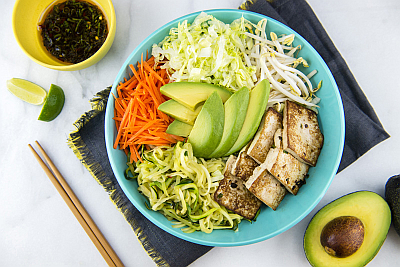
A: This concern comes from the fact that we need protein to rebuild our muscles after exercise (among other things). And when people hear protein, animal products tend to come to mind. The good news is that you can definitely meet your protein needs through plant-based foods.
People who follow a vegan or vegetarian diet should focus on eating the right amount of calories and a variety of plant-based proteins throughout the day. Your choices can include beans, lentils, whole grains, nuts and seeds. Whole foods will do even more for your body if you combine them in a single meal or snack—for example, an apple or banana with a handful of almonds.
Q: That brings up a great point. Plant-based foods are so versatile. Are there any other foods to keep in mind when planning a workout?
A: Absolutely! Soy products contain high-quality protein that’s on par with animal protein, making them ideal for anyone who is very active. Think edamame, tofu, tempeh and soy milk. There are endless possibilities.
For vegetarians who do include eggs and dairy products in their diet, these foods will also help boost protein intake. Greek yogurt, cottage cheese and milk are all good dairy choices.
Q: So many of us are fitting exercise into an already busy schedule. What plant-forward meals and snacks should we reach for when we are short on time?
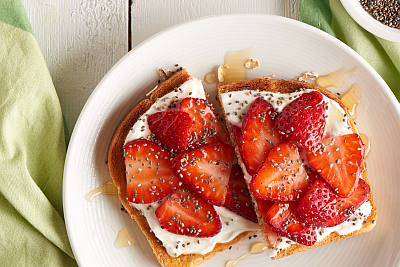
A: The goal should always be “whole food first.” This means turning to real, minimally processed food before grabbing a protein bar or shake. Whole foods offer so many more health benefits. This is true for anyone, but especially those who exercise intensely, whether it’s for a race or competition or just to stay in shape.
If you’re looking for a quick pre-workout snack, I’d suggest a banana or a handful of nuts or hemp seeds. If you need something more substantial, whole-wheat toast topped with peanut butter, homemade granola with dried fruit, or even an old-fashioned PB&J make quick, plant-forward meals to power you through an upcoming workout.
Q: Now that we know the many ways to get protein from a plant-based diet, how much should we eat each day?
A: If you’re very active, the general recommendation is 1.2 to 2 grams of protein for each kilogram of body weight. So, for example, a person who weighs 150 pounds (or 68 kilograms) would need 82 grams of protein every day. This will vary depending on how much you’re exercising or training.
If you’re moderately active, a good starting point is to eat 7 grams of protein for every 20 pounds of body weight. This means a person who weighs 150 pounds should shoot for about 53 grams of protein daily.
No matter what, space your intake throughout the day with a focus on eating protein after your workouts—so it can help your body recover.
Q: What other nutrients should active adults focus on?
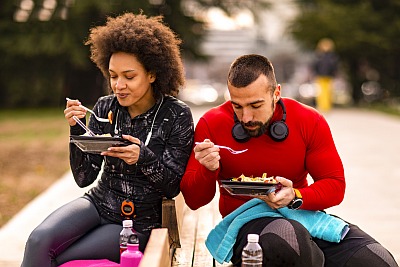
A: Iron is also essential! If you don’t get enough iron, you may experience fatigue and feel the difference in your performance. Men need about 8mg of iron per day. Women typically should consume 18mg per day until they hit menopause, when it drops down to 8mg.
To maintain a healthy iron level, choose soy products, beans, leafy greens like spinach, and fortified breads and cereals (look for the words “iron fortified.”) Pair these foods with sources of vitamin C (oranges, strawberries, and tomatoes) to help increase your iron absorption.
So there you have it. You CAN be plant-forward without sacrificing strength and stamina. All it takes is knowing which plant-based foods provide protein and eating enough of them. With so many delicious choices, we’re sure that part won’t be a problem!
Ready to take a step plant-forward? Check out the recipe page for more inspiration. Thanks again to Amy for sharing her expertise!
Note: Since everyone’s health history and nutritional needs are so different, please make sure that you talk with your doctor and a registered dietitian to get advice about the diet and exercise plan that‘s right for you.

